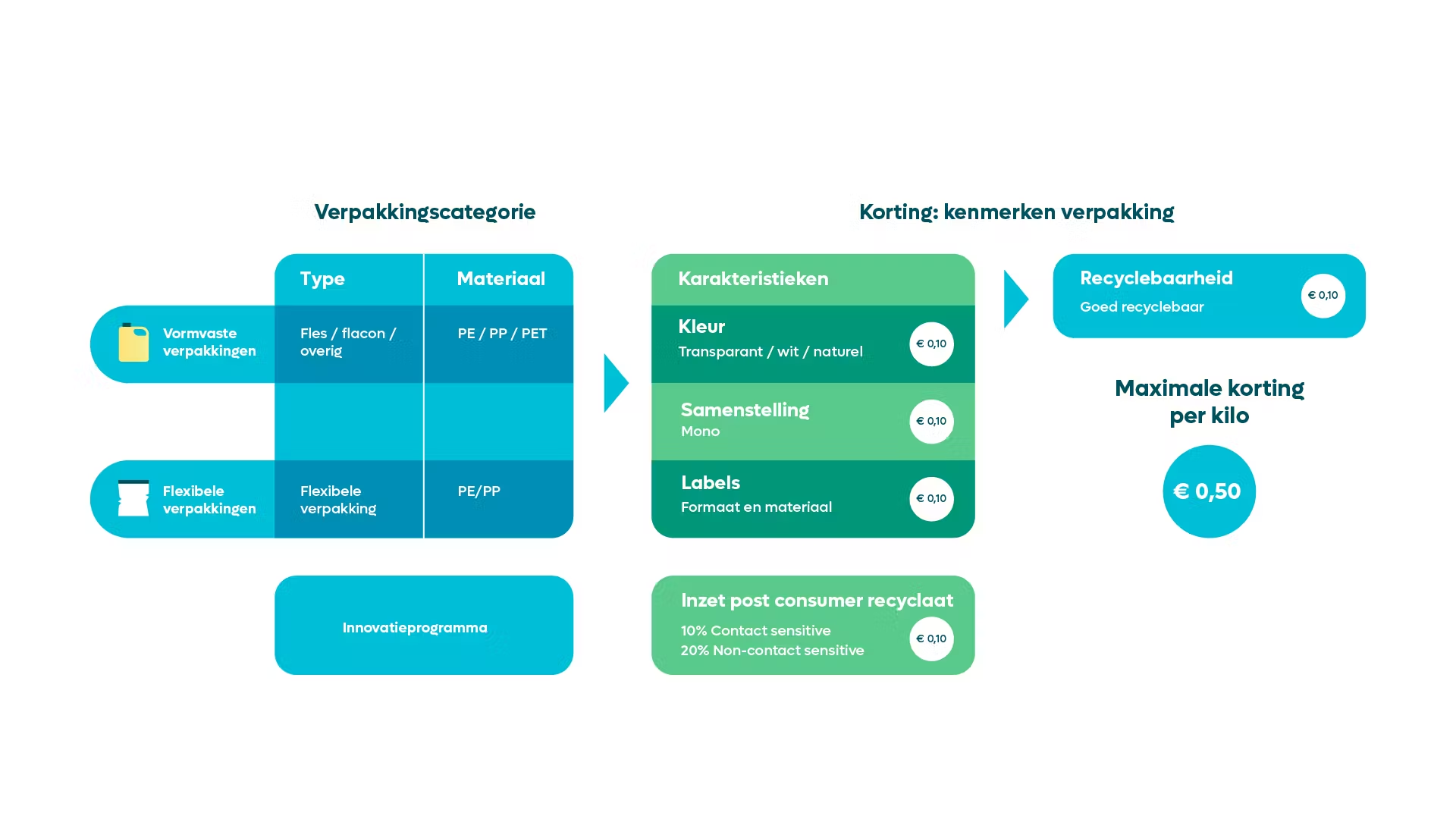Haven 45
1131 EP Volendam

The Packaging Waste Fund has unveiled a new approach to promote the production of recycled plastic packaging and easily recyclable plastic packaging in the Netherlands. This new approach from the Packaging Waste Fund concerns Rate Differentiation 2.0. The purpose of rate differentiation is to financially encourage companies to switch to packaging that is easier to recycle. Because of the step-by-step approach, based on different properties of the packaging, companies can make their packaging more sustainable step by step.
The Packaging Waste Fund has, according to its own statements, introduced Rate Differentiation 2.0 to further encourage importers/producers to make even more sustainable packaging choices. What sets Rate Differentiation 2.0 apart from its predecessor, which has been in effect since January 1 2019, is the opportunity to achieve significant discounts with modest adjustments. In other words, every small, sustainable modification/improvement to your packaging will be rewarded.
Rate differentiation means that producers and importers pay varying rates to the Packaging Waste Fund based on the sustainability characteristics of their plastic packaging. Starting from January 1, 2024, the Packaging Waste Fund intends to implement Rate Differentiation 2.0. Rate Differentiation 2.0 is a updated version of the old rate differentiation rule and means that packaging made from recycled plastic or packaging that is easily recyclable will receive a more favorable rate starting from January 1 2024. Does your packaging have a high sustainability performance? Then you will be rewarded from 2024. Conversely, packaging with a low sustainability performance will face a higher tariff as a ‘penalty.’
The calculation starts by looking at the packaging/disposal unit. Depending on whether the packaging is dimensionally stable or flexible / not specified, the packaging is subject to a certain starting rate. The starting rate for 2024 for flexible and unspecified packaging is set at € 1.32 and the starting rate for rigid packaging is € 1.22/kg excl. VAT. You can therefore receive a 10 cent discount on this starting rate for each discount step. So for example; if the rigid packaging does not meet any of the preconditions and requirements, you pay €1.22/kg excl. VAT. If the packaging meets the preconditions and requirements of 2 of our discount steps, a discount of 2×0.10 €/kg excl. VAT is applied. Then the rate for the relevant packaging is €1.02/kg excl. VAT.
The same system is applied to the starting rate for flexible packaging.
Ultimately, the discount can amount to 50 cents per kilo. To achieve the maximum discount, the packaging must meet all the preconditions and all requirements of the 5 steps. Those steps are explained below.
– If the packaging is clear or white (10 cents discount);
– If the packaging material consists of only one type (10 cent discount);
– If the labels meet the stated requirements (10 cents discount);
– If the packaging has passed the KIDV Recycle Check (10 cents discount);
– If the packaging is recyclable according to the stated conditions (10 cents discount).
You can save up to 50 cents per kilo!
As for innovations, the Packaging Waste Fund uses a customized approach.
The Packaging Waste Fund states: “With the introduction of this new rate differentiation for plastic packaging, we are taking an important step towards a circular economy.” The ultimate goal that the Packaging Waste Fund has in mind is that by 2050 all plastic packaging will contain 100 % circular and fossil-free material.
Whether this goal will actually be achieved by 2050 remains to be seen, but it is almost certain that the new rate differentiation rule will make a positive contribution to this. Every small, sustainable modification/improvement to your packaging will be rewarded. This enables producers to more quickly assess what they can enhance in their current packaging materials, all with the aim of making plastic packaging more recyclable and ensuring a more sustainable future for both people and the environment.
As the Circular Plastics Alliance, we can of course only welcome these developments! So talk to your producer/supplier of your current packaging materials to make your packaging even more sustainable where possible. If you have any questions about these changes or if you are curious about how they may impact you, please contact the Packaging Waste Fund or visit their website for more information.
Haven 45
1131 EP Volendam